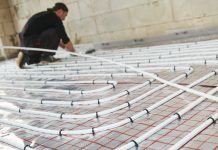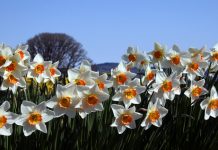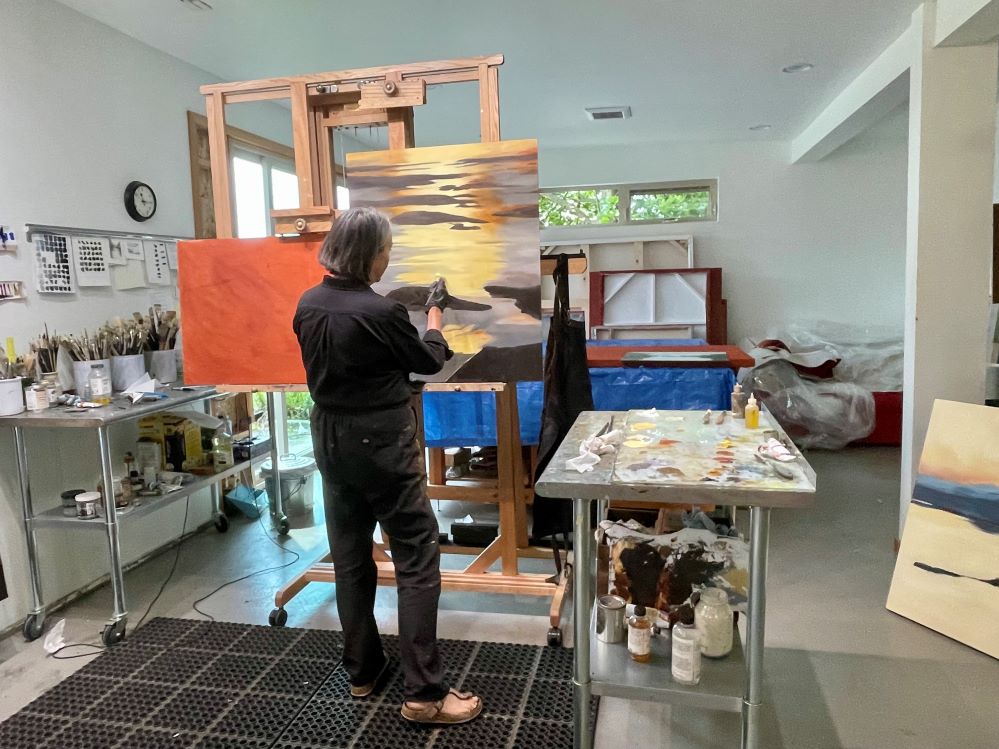Saturdays are painting days. Since Lisa McShane – a Samish Island artist – was a young girl taking art classes, Saturdays have been her painting sabbath, with long stretches of time to focus.
On this Saturday, I find her hard at work in her Samish island studio. With the soft sounds of Lona Del Ray playing in the background, McShane begins to work on a new piece, sketching a few rough lines over the burnt sienna foundation on the canvas. These initial sketches are drawn from photographs she takes of the places she loves. Later they will become filled in with layer upon layer of oil paint, capturing light, water and emotion.

It is this feature of light that marks her signature style. She paints on large canvases the expansive landscapes and waterscapes she encounters in her day and on her travels.
She spent much of her formative years growing up in eastern Washington. Here she witnessed the dust from the yellow wheat fields filter the sky with a luminous light as the seasons waned toward the end of the year. Her paintings reflect this light of her memories.
Honing her craft, she attended Sonoma State University, where she double majored in sculpture and painting. But life sometimes steers us in a different direction and for McShane starting a family became her new path. She worked for nonprofit and political advocacy groups such as Conservation Northwest, where she learned about the community impact of climate change, something near to her heart that would become formative in her art.
In 2008, McShane was asked to work on Governor Gregoire’s re-election campaign. After a grueling year of campaigning with the Governor and traveling around the state of Washington, she knew she was ready to get off the work treadmill She found herself in eastern Washington looking at the saturated light as the sun slipped beneath the horizon. It was then, standing there in the land she grew up in that she knew she needed to paint again. Life had come full circle.
McShane spent a year re-learning how to paint and she has not stopped since.

New Exhibit on The Impact Of Climate Change
Currently, McShane works as a political consultant contributing much of her time to tribal issues throughout Washington state. It is on her travels to places such as Lummi Island that she often stops to snap a photograph, capturing the beauty of the Nooksack River or a small solitary inlet.
She chases the light. “I watch the sun come up over Samish Island and I am always looking at sunsets,” McShane says.
Leaning up against the wall, next to the new work she is sketching rest two large canvas paintings. These are her latest work. She is finalizing them for an upcoming show titled, “Surge: Mapping Transition, Displacement, and Agency in Times of Climate Change” at the Museum of Northwesst Art (MONA) in La Conner.
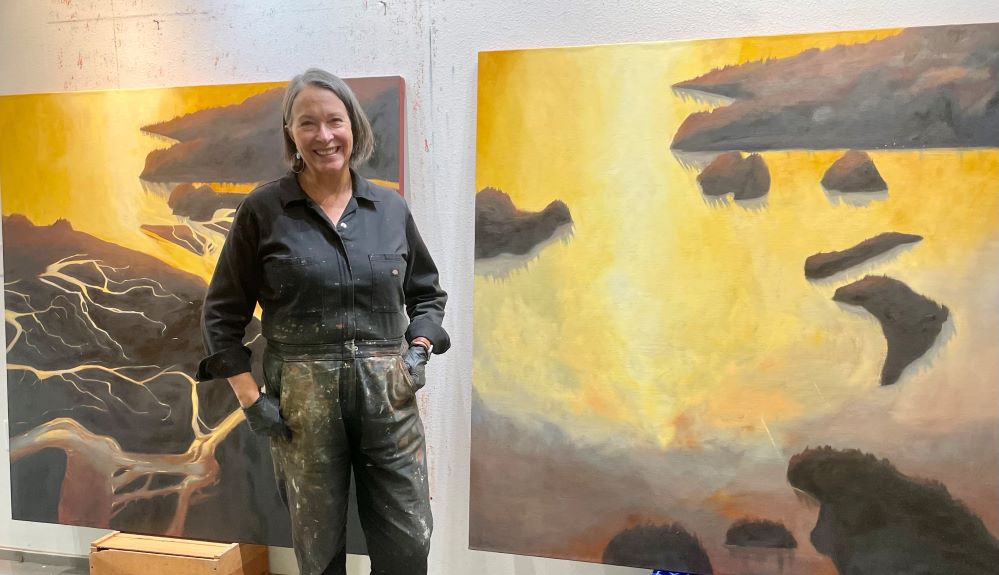
The scenes depict an aerial view of the shoreline around her home on Samish Island and the neighboring deltas.
The first panel shows the land as it looks today, the year McShane turns 64. The second panel illustrates how this same area will look when her grandson, who is two, turns 64, given current climate change models. Much of the landscape is under water. A stark, and pointed, reality of the impact climate change is creating. She points to an area of shoreline around La Conner and says, “All of this will be under water.”
Searching through a stack of papers, she pulls one from the pile with a printout that looks like a topographical map of Samish Island. A few areas are colored in red and McShane quickly explains those are land masses. For several months she has been working with a geologist at Western Washington University to aid her in better understanding the local implications of climate change as well as how rising sea levels will impact land around Samish Island.
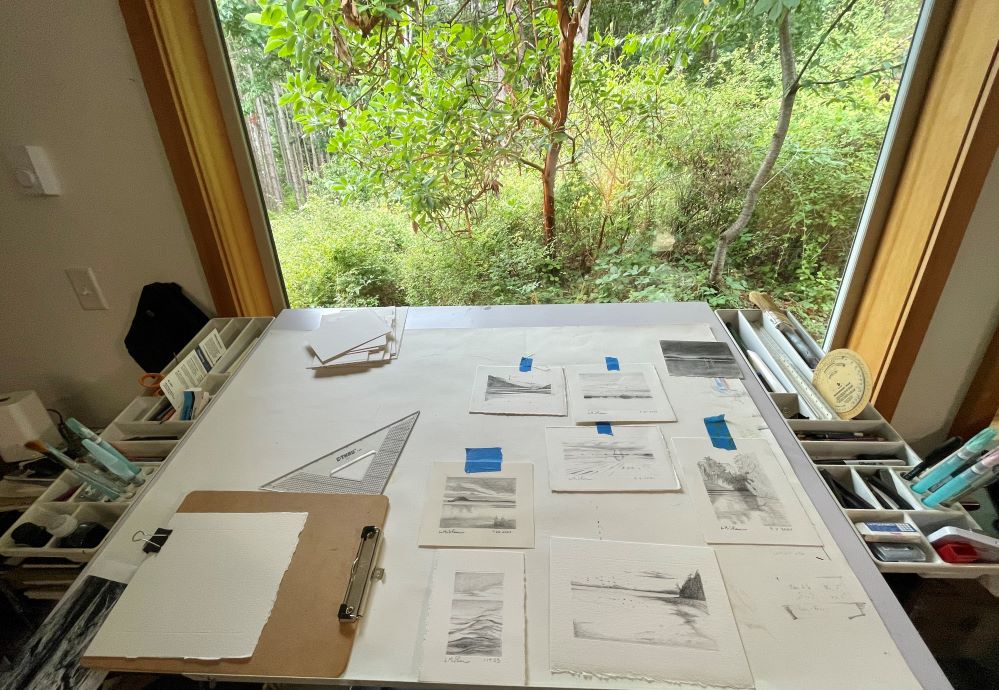
McShane calls herself, “A landscape oil painter interested in climate change.”
She landed on her current theme because she wanted to convey something personal to her. “This is my home, my world,” she says pointing out the window. “This represents my life right now. And this,” she points to the second canvas, “is the world for my grandson and his life. I want to show how climate change touches us all because it will touch the people we love, for many generations. I want people to feel that.”
In the future depiction based on current data modeling, Samish Island Road is gone as well as the town of Edison and La Conner.
McShane hopes people viewing her work will feel the local impact on where we live, stirring action on climate change but feels it is already too late to stop some of the effects. “We are seeing climate change in action each year. It is a little late to change that trajectory but by our choices, we can work to ensure the trajectory is not a lot worse 100 years from now.”
The exhibit Surge opens October 14, 2023, at the Museum of Northwest Art and runs until January 21, 2024.



